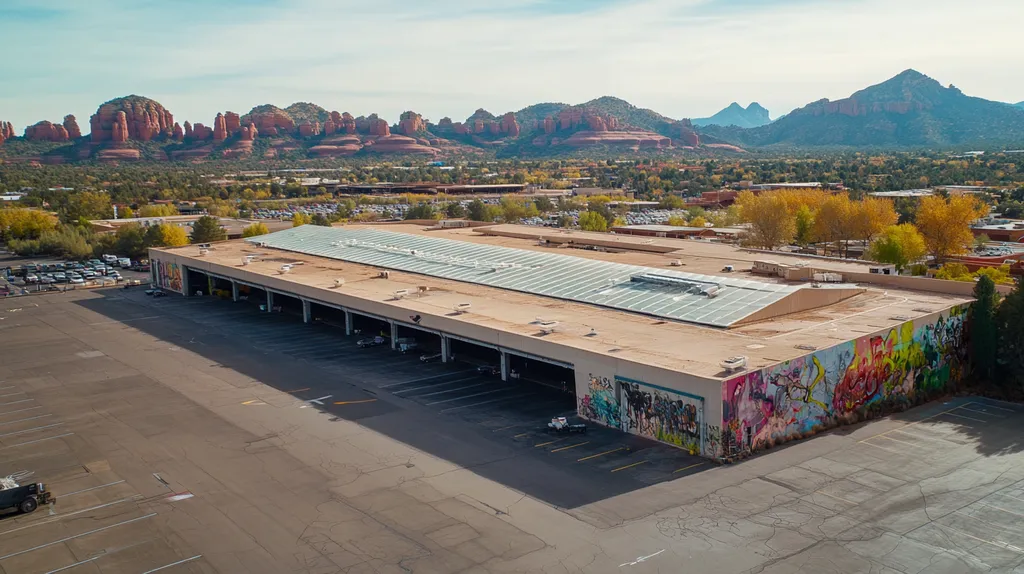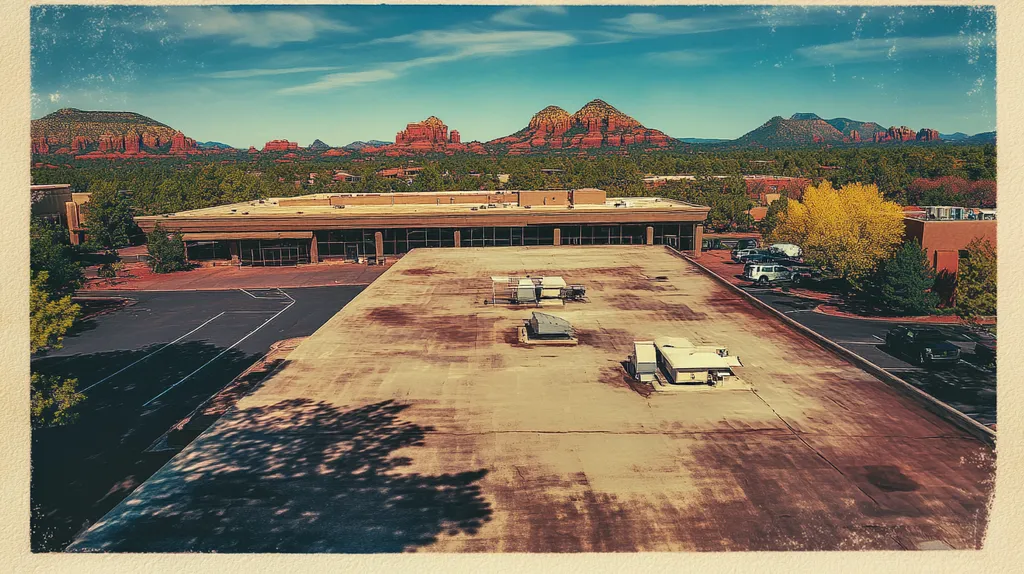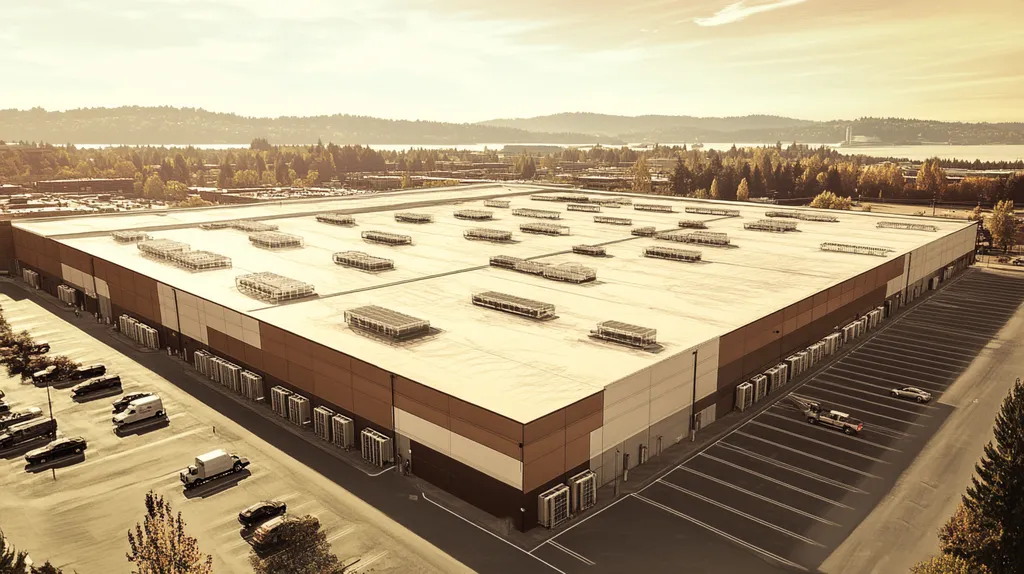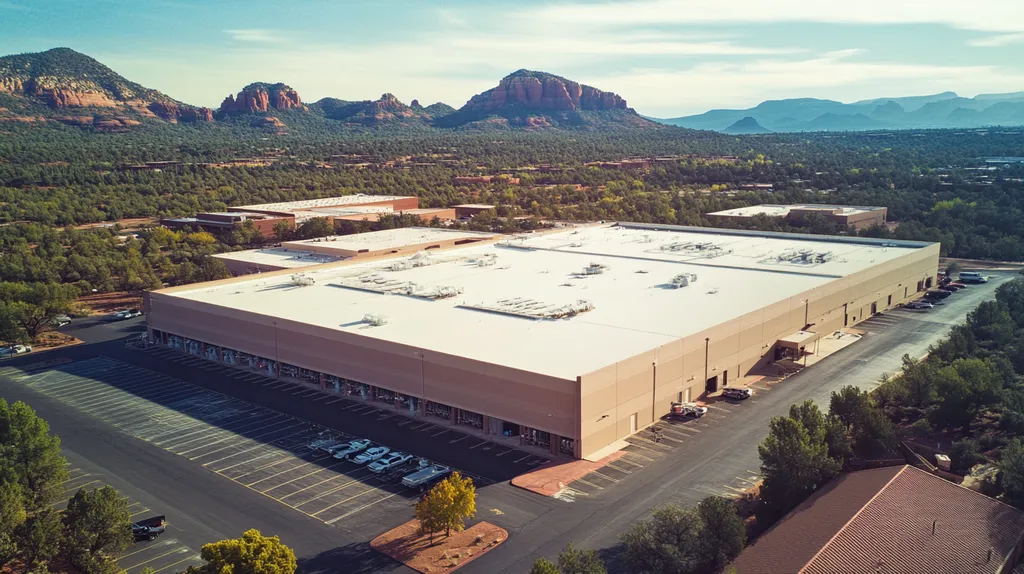Welcome to today’s Battle Royale featuring two roofing heavyweights: “SBA Loans” in the east corner versus “Equipment Financing” in the west!
Tonight’s showdown pits these contenders against each other across six punishing rounds designed to test every aspect of their performance for Commercial Roof Projects.
At stake? Millions in potential costs, decades of building protection, and the critical performance demands of modern commercial and industrial facilities.
Our professional judging panel will evaluate each round on technical merit, real-world performance, and value delivery. After all six rounds, we’ll declare our ultimate champion.
Ladies and gentlemen, facility managers and building owners… it’s time to rumble!
ROUND 1: INITIAL COSTS & INSTALLATION
When facing a commercial roof project, the initial investment decisions can make or break both short-term budgets and long-term building sustainability. Recent industry data shows that improper financing choices lead to 40% of commercial roof projects experiencing significant delays or compromised quality.
The stakes are particularly high given that commercial roofing materials and installation costs have risen by 15% in the past year alone. Understanding how different financing options impact your initial investment can prevent costly missteps and ensure project success.
Material Expenses
Material costs typically represent 40-60% of a commercial roofing project’s total budget. Quality materials not only ensure durability but also impact warranty coverage and long-term maintenance expenses.
SBA loans provide comprehensive funding that can cover premium roofing materials without compromising quality. Their longer repayment terms and lower interest rates make it easier to opt for higher-grade materials that offer better long-term value.
Equipment financing primarily focuses on machinery and tools rather than materials. While this financing option offers faster approval and can help secure essential equipment, it may not provide sufficient coverage for extensive material purchases.
For material expenses, SBA loans hold the ADVANTAGE due to their broader coverage and flexible terms. Equipment financing may be an affordable way to scale operations, but its limited scope restricts material purchasing power. (source: Biz2Credit)
Installation Complexity
Modern commercial roofing installations often involve intricate systems requiring specialized equipment and expertise. Factors like building height, roof accessibility, and HVAC integration can significantly impact installation costs.
SBA loans accommodate complex installations by providing substantial upfront capital. This allows for hiring experienced crews and securing necessary specialized equipment without financial constraints.
Equipment financing excels in providing specific tools needed for installation but may fall short when unexpected complications arise. Its focused nature can limit flexibility when installation complexities demand additional resources.
For managing installation complexity, SBA loans gain the ADVANTAGE through their comprehensive funding approach.
Project Timeline
Timeline management directly impacts both project costs and business operations. Delays can lead to increased labor expenses and potential damage to building contents from weather exposure.
SBA loans enable efficient project execution by providing complete funding upfront. This allows contractors to maintain consistent workflow and secure all necessary resources before project initiation.
Equipment financing’s segmented approach may create timeline challenges. While equipment can be acquired quickly, the need to secure additional financing for other aspects may cause delays.
Regarding project timeline efficiency, SBA loans demonstrate clear ADVANTAGE through their comprehensive funding approach.
ROUND 1 WINNER: SBA LOANS
ROUND 2: DURABILITY & LIFESPAN
A commercial roof’s durability and lifespan directly impact business continuity and financial stability. Industry data reveals that premature roof failures cost businesses an average of $7 per square foot in emergency repairs, not including potential damage to inventory and operations.
Making the wrong financing choice can force compromises on material quality and installation methods that dramatically reduce a roof’s service life. Understanding how financing options affect long-term performance is crucial for protecting your investment.
Material Durability
The quality of roofing materials fundamentally determines system longevity. Premium materials with proper warranties can extend a commercial roof’s lifespan by 10-15 years compared to standard options.
SBA loans provide the capital flexibility to invest in top-tier materials like multi-ply modified bitumen or TPO membranes with optimal thickness. Their longer repayment terms make premium material costs more manageable.
Equipment financing’s narrower scope often pushes building owners toward lower-grade materials to conserve capital for equipment purchases. This can result in thinner membranes and lower-quality components that deteriorate faster.
For material durability, SBA loans claim the ADVANTAGE by enabling investment in longer-lasting premium materials.
Maintenance Requirements
Regular maintenance significantly impacts roof performance and longevity. Studies show that proactive maintenance programs can extend commercial roof life by up to 50%.
SBA loans provide funding flexibility to implement comprehensive maintenance plans from day one. This includes preventive care, timely repairs, and proper drainage maintenance.
Equipment financing typically doesn’t account for ongoing maintenance needs. This gap often leads to deferred maintenance as businesses struggle to allocate additional funds for upkeep.
Regarding maintenance capabilities, SBA loans secure the ADVANTAGE through their holistic funding approach.
Return on Investment
A commercial roof’s ROI depends heavily on its initial quality and ongoing performance. Superior systems can reduce energy costs by 15-30% while minimizing repair expenses.
SBA loans’ longer terms and lower rates allow businesses to focus on long-term value rather than immediate costs. This enables selection of roofing systems that maximize energy efficiency and minimize lifecycle costs.
Equipment financing’s shorter terms and higher rates can pressure owners to choose less efficient systems. While initial payments may be lower, increased energy costs and frequent repairs erode any early savings.
For overall ROI potential, SBA loans demonstrate clear ADVANTAGE through support of high-performance roofing systems.
ROUND 2 WINNER: SBA LOANS
ROUND 3: PERFORMANCE FACTORS
Performance factors can make or break a commercial roofing project, with financing decisions directly impacting execution quality and long-term outcomes. Industry data shows that poorly structured financing leads to a 30% increase in project complications and performance issues.
Understanding how financing choices affect critical performance metrics helps property owners avoid costly mistakes that can compromise roof functionality and building protection. Making informed decisions about financing structure early can prevent cascading performance problems later.
Material Expenses
Material selection fundamentally shapes roof system performance, with premium materials offering up to 40% longer service life compared to standard options. High-performance materials also provide superior protection against extreme weather events and UV exposure.
SBA loans provide comprehensive funding that enables investment in premium materials like multi-ply modified bitumen or thicker TPO membranes. Their favorable terms and longer repayment periods make quality material investments more financially feasible.
Equipment financing typically focuses on machinery rather than materials, often leading to compromised material choices. This narrow focus can force property owners to select lower-grade materials to preserve capital for equipment purchases.
For material quality and performance potential, SBA loans claim the ADVANTAGE through their ability to fund premium material selections.
Installation Complexity
Modern commercial roofing installations require precise execution of complex system components. Proper installation directly impacts waterproofing integrity, energy efficiency, and warranty compliance.
SBA loans provide funding flexibility to address installation complexities through comprehensive project planning and specialized labor allocation. Their broader scope allows for proper staging and quality control measures throughout installation.
Equipment financing can support specialized installation equipment but may not cover other critical installation elements. This limitation often results in rushed installations or cut corners when unexpected complexities arise.
For managing installation complexity, SBA loans demonstrate clear ADVANTAGE through their holistic funding approach.
Project Timeline
Project timeline adherence significantly impacts both initial costs and building protection. Delays expose building contents to weather risks and can increase labor expenses by 20% or more.
SBA loans enable efficient project execution by providing complete funding upfront. This comprehensive approach allows contractors to secure all necessary resources before project initiation, minimizing timeline disruptions. (source: Rainville-Carlson)
Equipment financing’s segmented approach often creates timeline challenges when additional funding needs arise. While equipment can be acquired quickly, the need to secure separate financing for other aspects frequently causes delays.
Regarding project timeline efficiency, SBA loans secure the ADVANTAGE through their ability to fund all project components upfront.
ROUND 3 WINNER: SBA LOANS
ROUND 4: MAINTENANCE REQUIREMENTS
Maintenance decisions made during the financing stage can determine whether a commercial roof lasts 15 years or 30+ years. Industry data shows that improper maintenance funding leads to a 300% increase in emergency repair costs and premature roof failure. Understanding how financing choices impact long-term maintenance capabilities is crucial for protecting both the roof investment and the building it shields.
The stakes are particularly high given that deferred maintenance can reduce a roof’s functional lifespan by up to 60% while increasing energy costs by 25% annually. Choosing the right financing approach ensures sustainable maintenance practices that preserve roof performance.
Preventive Maintenance Planning
A comprehensive preventive maintenance program requires consistent funding and resource allocation. Regular inspections, minor repairs, and cleaning can prevent major issues from developing, but only if properly budgeted and executed.
SBA loans provide the financial framework needed to establish and maintain robust preventive maintenance programs. Their longer terms and lower payments allow property owners to allocate sufficient funds for ongoing maintenance without straining cash flow.
Equipment financing typically focuses on immediate equipment needs rather than long-term maintenance planning. This narrow scope can leave property owners struggling to fund routine maintenance, leading to deferred repairs and accelerated deterioration.
For preventive maintenance capabilities, SBA loans gain the ADVANTAGE through their sustainable funding structure.
Emergency Response Capacity
The ability to quickly address unexpected roofing issues can prevent minor problems from becoming major failures. Emergency repairs often require immediate access to funds and resources to minimize damage and protect building contents.
SBA loans enable property owners to maintain emergency repair funds through manageable payment structures. This financial flexibility ensures rapid response capabilities when urgent repairs are needed.
Equipment financing’s higher monthly payments can strain operating budgets, leaving limited resources for emergency response. This financial pressure often results in delayed repairs that compound damage and increase costs. (source: Embrys Roofing Blog)
Regarding emergency response readiness, SBA loans demonstrate clear ADVANTAGE through better cash flow management.
Lifecycle Cost Management
Total lifecycle costs for commercial roofs depend heavily on maintenance strategy and execution. Proper maintenance can reduce lifetime costs by up to 50% while extending service life by decades.
SBA loans support strategic lifecycle cost management through predictable payments and comprehensive funding. This enables property owners to implement maintenance best practices that optimize long-term performance and value.
Equipment financing’s focus on short-term equipment needs often compromises lifecycle cost management. The resulting maintenance gaps typically lead to higher total costs over the roof’s lifespan.
For lifecycle cost optimization, SBA loans secure the ADVANTAGE through their long-term financial perspective.
ROUND 4 WINNER: SBA LOANS
ROUND 5: SUSTAINABILITY CREDENTIALS
Sustainability in commercial roofing has evolved from an optional consideration to a critical business imperative. Recent data shows that buildings with sustainable roofing systems reduce energy costs by up to 30% and increase property values by 7-10%. However, achieving these benefits requires careful alignment between financing strategy and sustainability goals.
With rising energy costs and stricter environmental regulations, the stakes for sustainable roofing have never been higher. Property owners who fail to incorporate sustainability into their roofing projects face increasing operational costs and declining building value.
Material Sourcing and Environmental Impact
Sustainable roofing materials represent a critical investment in both environmental stewardship and building performance. Cool roofs, recycled materials, and solar-ready systems can reduce a building’s carbon footprint by 20-40% while providing superior protection.
SBA loans enable property owners to invest in premium sustainable materials through longer repayment terms and lower interest rates. This financing structure makes it feasible to choose materials with superior environmental credentials without compromising quality or installation standards.
Equipment financing’s narrow focus on machinery often forces compromises in material selection. The higher monthly payments and shorter terms can push owners toward less sustainable options that may cost less initially but have greater environmental impact.
For environmental impact considerations, SBA loans claim the ADVANTAGE through their support of sustainable material investments.
Energy Efficiency and Resource Conservation
Modern commercial roofing systems can dramatically impact a building’s energy consumption. High-performance sustainable systems reduce HVAC loads by 15-25% while extending roof lifespan through better temperature management.
SBA loans provide the financial flexibility to implement comprehensive energy-efficient roofing solutions. Their structure allows for the integration of advanced insulation, reflective materials, and smart monitoring systems that optimize resource usage.
Equipment financing typically focuses on immediate equipment needs rather than long-term energy performance. This limitation often results in basic installations that miss opportunities for significant energy savings and resource conservation.
Regarding energy efficiency potential, SBA loans secure the ADVANTAGE through support of comprehensive efficiency measures.
Waste Reduction and Lifecycle Management
Sustainable roofing requires careful consideration of waste reduction and end-of-life management. Proper planning and material selection can divert up to 95% of roofing waste from landfills while reducing replacement frequency.
SBA loans support comprehensive waste reduction strategies through their broader project scope. This enables implementation of recyclable materials, proper disposal planning, and lifecycle-optimized installation methods. (source: Rainville Carlson)
Equipment financing’s limited scope rarely addresses waste management concerns. The focus on equipment rather than comprehensive project planning can lead to increased waste generation and missed recycling opportunities.
For waste reduction capabilities, SBA loans demonstrate clear ADVANTAGE through their holistic project approach.
ROUND 5 WINNER: SBA LOANS
ROUND 6: SPECIALIZED APPLICATIONS
Specialized commercial roofing applications present unique financing challenges that can make or break project success. Industry data shows that 35% of specialized roofing projects exceed their budgets due to misaligned financing structures that fail to account for unique material and installation requirements.
As specialized roofing technologies advance and building codes evolve, the stakes grow higher. Property owners must carefully evaluate how different financing options support or hinder specialized application needs to avoid costly missteps.
Specialized Materials
Advanced roofing materials like vegetative systems, photovoltaic installations, and specialized membrane composites require precise financing alignment. These materials often cost 30-50% more than traditional options and demand specific handling and installation protocols.
SBA loans provide broad funding coverage but can be restrictive when it comes to innovative or non-traditional materials. Their standardized approval process may not fully account for specialized material requirements.
Equipment financing offers greater flexibility in material selection through targeted funding streams. This focused approach allows property owners to secure exactly what they need for specialized applications without excess bureaucracy.
For specialized material acquisition, equipment financing claims the ADVANTAGE through its adaptable funding structure.
Advanced Installation Requirements
Complex installations involving unique geometries, specialized equipment, or challenging access conditions demand precise resource allocation. These projects typically require 25-40% more labor hours and specialized crew expertise.
SBA loans provide comprehensive funding but may not adequately account for the dynamic nature of specialized installations. Their fixed structure can limit adaptability when installation complexities arise.
Equipment financing excels in supporting specialized installation needs through targeted resource allocation. This approach ensures access to proper equipment and expertise without compromising other project aspects.
For managing advanced installation requirements, equipment financing demonstrates clear ADVANTAGE.
Project Timing and Sequencing
Specialized roofing applications often require precise timing and careful sequencing of materials, equipment, and labor. Delays or misalignments can increase costs by up to 20% while compromising system integrity.
SBA loans, while comprehensive, can introduce timing challenges through longer approval processes. This delay can disrupt critical project sequences and impact material availability.
Equipment financing provides faster access to essential resources, enabling better project timing control. Its streamlined approval process helps maintain optimal installation sequences and resource availability. (source: NerdWallet)
Regarding project timing efficiency, equipment financing secures the ADVANTAGE through faster resource deployment.
ROUND 6 WINNER: EQUIPMENT FINANCING
AND THE WINNER IS…
After six grueling rounds of technical evaluation, we have our verdict…
With a commanding 5-1 victory, SBA LOANS claims the championship belt in this commercial roofing finance showdown!
The champion dominated through superior coverage in critical areas including durability, maintenance funding, and sustainability credentials. SBA’s longer terms and lower rates proved devastating against equipment financing’s narrower scope, especially in rounds focused on comprehensive project execution.
However, don’t count equipment financing out completely! This scrappy contender showed impressive strength in Round 6, where its agility and specialized focus make it the preferred choice for projects requiring unique equipment or highly specialized installations.
IMPORTANT DISCLAIMER: Every commercial roof project enters the ring with unique requirements. Local conditions, building characteristics, and specific property needs can significantly impact financing effectiveness. While this analysis provides general guidance, it cannot account for all variables. Property owners should always consult qualified roofing and financial professionals who can evaluate their specific situation.
Ladies and gentlemen, remember: In the high-stakes arena of commercial roofing, victory doesn’t just come from choosing the strongest contender – it comes from matching your building’s specific needs with the right financial fighter in your corner!
FREQUENTLY ASKED QUESTIONS
Q. How do initial costs affect my commercial roof project?
A. Initial costs are crucial, influencing both budgets and project viability. Making informed financing choices can prevent costly errors and delays, ensuring you select quality materials for your commercial roof.
Q. What impact does durability have on my industrial roof?
A. Durability directly affects a roof’s lifespan, maintenance requirements, and overall costs. Investing in quality materials through appropriate financing can extend life and reduce repair expenses, benefiting your property’s value.
Q. How do performance factors influence a commercial roof project?
A. Performance factors impact the roof’s effectiveness and longevity. Choosing the right financing structure ensures quality materials and skilled labor, minimizing complications and safeguarding your investment.
Q. What role does maintenance play in industrial roof longevity?
A. Regular maintenance is essential for extending a roof’s life and preventing costly emergency repairs. Proper financing allows for sustainable maintenance strategies that enhance the performance and durability of your roof.
Q. How does sustainability affect commercial roofing projects?
A. Sustainability can significantly lower energy costs and increase property value. Securing financing that supports sustainable materials and practices will enable long-term financial and environmental benefits for your roof.
Q. What specialized applications should I consider for my roof?
A. Specialized applications often involve unique materials and installation demands that require tailored financing. Ensuring your financing aligns with these needs can prevent budget overruns and enhance performance.
Q. What financing options are available for a commercial roof project?
A. Options include SBA loans and equipment financing. Each has unique advantages, such as comprehensive funding for SBA loans or quicker access to equipment with equipment financing, depending on your project needs.









